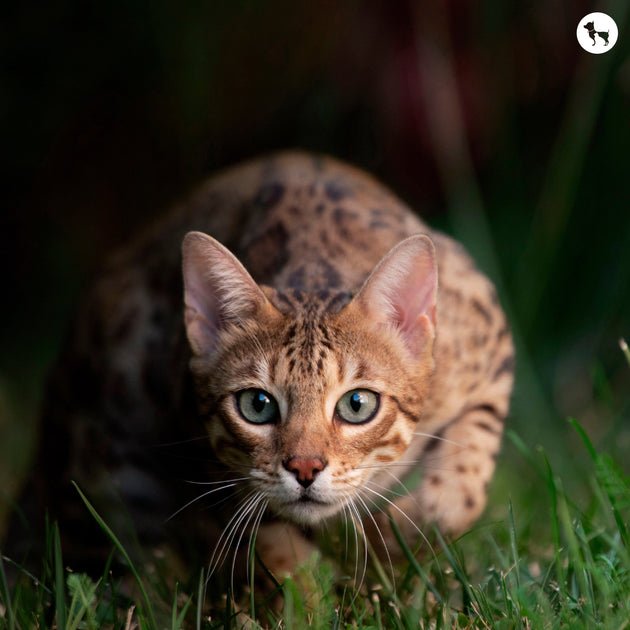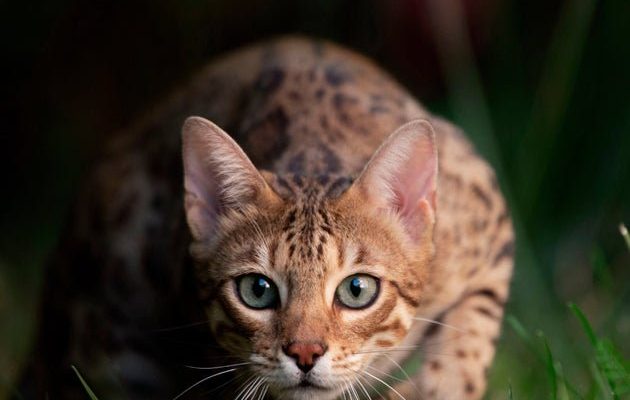
Bengal cats are often sought after for their stunning coats, which come with a marble or spotted pattern that can take your breath away. But they’re not just pretty faces. Their lively disposition and playful nature make them wonderful companions. Let’s dive deeper into what makes Bengal cats so special, covering their personality traits, appearance, and how to care for them effectively.
Understanding the Bengal Cat Personality
Bengal cats have a personality that’s as vibrant as their coat. They’re known for being energetic, curious, and sometimes a bit of a handful. Picture a puppy’s enthusiasm packed into a cat’s form. These cats love to explore and can often be found climbing to the highest point in your home—be it the top of a bookshelf or your kitchen cabinets. Their playful nature means they thrive on interaction and mental stimulation.
You might be wondering how this translates into daily life. Bengals often engage in playful wrestling, chase after toys, and may even learn how to fetch. Keeping them entertained is key to a happy Bengal; if they’re bored, they might just create their own fun—like knocking over your favorite vase!
This breed is also known for their social skills. They enjoy being around people and other pets, and they may follow you around the house like a little shadow. Honestly, having a Bengal around means you’re getting a companion that’s full of life and attitude.
Distinctive Appearance of Bengals
Now, let’s talk looks. Bengal cats are often described as looking like miniature leopards. They’re muscular and strong, with a sleek body that exudes grace and agility. Their coat is one of their most striking features, available in a variety of colors—think golden, silver, or even charcoal. This unique pattern can be spotted or marbled, and it has a luxurious feel that can’t be denied.
The coat is not just for show; it actually has a soft, plush texture that makes them incredibly pleasant to pet. Furthermore, their eyes are large and almond-shaped, usually green or gold, giving them an expressive, captivating gaze. With a Bengal, every glance is like a peek into a wild, exotic world.
If you’re considering adoption, you might notice the difference between a Bengal and a typical domestic cat right away. Their larger size, longer legs, and broader head set them apart. No doubt, these cats are a head-turner!
Care Needs for Bengals
Caring for a Bengal cat involves a bit more than just food and shelter. Because they’re so active, they need plenty of playtime and mental challenges. Ensure you have a variety of toys—feather wands, laser pointers, and puzzle toys are all great options. You could even set up a cat tree for climbing; they love to survey their domain from above.
Bengals are also known for their intelligence. This means you might need to invest time in training. You can teach them tricks or even how to walk on a leash—yes, it’s possible! Remember, mental stimulation is just as important as physical exercise. You might want to explore interactive toys or even consider puzzle feeders to keep their minds sharp.
Feeding your Bengal the right diet is also crucial. They have specific nutritional needs and thrive on high-quality cat food rich in protein. Look for options that list real meat as the first ingredient. Since Bengals can be prone to obesity, be mindful of their portion sizes and avoid giving too many treats. Keeping your Bengal fit is essential for a long and happy life.
Health Considerations for Bengals
Like any breed, Bengal cats come with their own set of health concerns. Some common issues include hypertrophic cardiomyopathy (a heart condition) and certain skin problems. Regular vet check-ups are vital to catch any potential issues early.
You might also want to keep an eye on their hydration. Bengals can be prone to urinary issues, so make sure they have constant access to fresh water. Feeding wet food can also help with hydration and urinary tract health.
Additionally, grooming is part of the care routine. While their coat doesn’t mat easily, regular brushing helps reduce shedding and keeps their coat shiny. A good brush once a week should do the trick. Plus, it’s a nice way to bond with your furry friend!
Socializing Your Bengal Cat
Socialization is key for a Bengal cat, especially when they’re young. Expose them to a variety of people, sounds, and experiences. This helps them grow into well-adjusted adults. Bengals are known to be quite vocal, so don’t be surprised if they “talk” back to you!
If you have other pets, introduce them slowly. Bengals usually adapt well to different environments, but taking your time during introductions can prevent unnecessary stress. Once they’re comfortable, you’ll find that they form strong bonds with other household members—furred or not!
Investing time in socializing not only improves your Bengal’s temperament but also enhances their intelligence. A well-rounded Bengal can be a delightful companion, ready to join you in various activities.
The Joy of Living with a Bengal Cat
Bringing a Bengal cat into your life can be a rewarding experience. They bring energy and excitement to your home, and you’ll never have a dull moment. Their playful antics and affectionate nature can brighten even the darkest days. Imagine coming home after a long day only to be greeted by a bouncing, curious kitten ready to share in your joys and sorrows.
However, they do require commitment. Their active lifestyle means you’ll need to dedicate time for play, training, and social bonding. But for many, the joy and companionship a Bengal provides far outweigh the effort you put in.
In short, Bengals aren’t just pets; they’re part of the family. With the right care, you’ll find yourself enjoying a deep and fulfilling relationship with these unique cats.
In conclusion, Bengal cats offer an extraordinary blend of beauty, personality, and intelligence. If you’re ready for a lively addition to your household, a Bengal could be the perfect choice for you.

